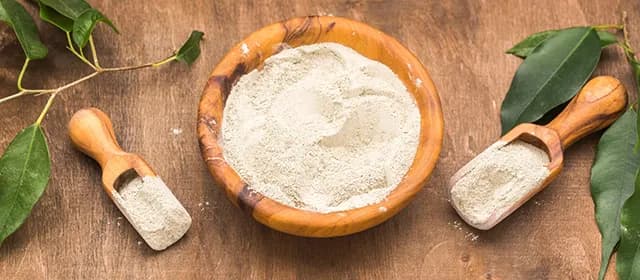Milk thistle (Silybum marianum) continues to occupy a prominent position among botanical supplements, particularly in liver support, antioxidant, and wellness markets. The regulatory landscape for botanicals and supplements is evolving rapidly around the world, affecting formulation, marketing, compliance, labeling, import/export, and safety standards. In 2025, regulatory trends in key jurisdictions such as the United States, Canada, and the European Union are reshaping how the milk thistle industry operates.
Kings Research estimates that the global milk thistle market was valued at USD 98.6 million in 2023 and is projected to grow from USD 105.3 million in 2024 to USD 176.1 million by 2031, exhibiting a CAGR of 7.63% over the forecast period. This article explores those regulatory dynamics, their implications for industry participants, and strategic considerations for compliance and innovation.
Regulatory Frameworks Shaping Milk Thistle Markets in Major Regions
United States: FDA and the Human Foods Program:
The U.S. Food and Drug Administration (FDA) regulates dietary supplements under the framework established by the Dietary Supplement Health and Education Act (DSHEA) of 1994. Under DSHEA, supplements do not require premarket approval, but manufacturers must ensure safety, follow current good manufacturing practices (cGMPs), and file New Dietary Ingredient Notifications (NDIN) when introducing novel ingredients.
The FDA is implementing its new Human Foods Program (HFP), which reorganizes oversight of ingredients, including dietary supplements. That structural shift places greater emphasis on coordination, safety evaluation, and modernization of review processes. Recent policy signals suggest the FDA may strengthen scrutiny of new ingredients and labeling claims. The agency has published draft and final guidance on topics such as New Dietary Ingredient (NDI) master files, which may influence submission strategies for botanical extracts such as milk thistle (Source: www.fda.gov).
One challenge for the U.S. industry involves whether a specific milk thistle extract or derivative falls under NDI requirements, particularly if chemical alteration or concentration is involved. The FDA recently released educational resources clarifying the NDIN process. Enforcement actions, inspections, and warning letters remain active levers.
Canada: Permitted Use of Milk Thistle Extract
Health Canada, in early 2025, formally modified the List of Permitted Supplemental Ingredients (M-SIS-25-02) to permit milk thistle seed extract (silymarin) for use in supplemented foods. That change lifts a prior restriction and opens new product channels in Canadian food and supplement markets.
Health Canada’s public summary of the safety assessment emphasizes that the standardized extract is considered safe at defined doses and under monitored purity conditions. This regulatory shift gives Canadian manufacturers and importers broader flexibility to deploy milk thistle in functional food and supplement categories, but it also imposes clarity on specifications, acceptable dose limits, and purity criteria.
European Union: Novel Food Regulation and EFSA Claims
The European Union regulates ingredients under the Novel Food Regulation (Regulation (EU) 2015/2283). If an ingredient lacks a history of significant consumption in the EU prior to 15 May 1997, it must secure authorization under the Novel Food framework. (FoodChain ID explanation of Novel Food regulation)
Milk thistle, including silymarin extracts, is generally considered a non-novel ingredient in food supplements under EU practice and appears in negative lists of unauthorized novel foods. An earlier compilation list shows milk thistle (Silybum marianum) is designated “not authorized as a novel food” under older listings (Source: apps.fas.usda.gov).
That status enables continued use of milk thistle in supplements without the need for novel food authorization, but any new derivative, concentration, or use beyond supplement categories may trigger review. EU member states also maintain national regulations or restrictions beyond the Union level. The EU Novel Food Catalogue assists operators in assessing compliance.
On health claims, the European Food Safety Authority (EFSA) already evaluated a milk thistle extract (silymarin BIO-C) health claim related to breast milk production and rejected the claim.
Global Regulatory Trends Influencing Milk Thistle Compliance and Growth
- Stronger Ingredient Safety Review: Globally, regulators emphasize proactive safety due diligence. In the U.S., the new HFP structure signals increased focus on ingredient premarket review, adverse event surveillance, and import oversight. The Canadian change shows that positive permitting requires safety justification. In regions without streamlined oversight, companies must assemble robust toxicology, impurity, and stability data for milk thistle extracts to meet evolving standards.
- Labeling, Claims, and Consumer Transparency: Regulators are intensifying scrutiny of label claims. In the U.S., use of structure/function or health claims is monitored under the FTC and FDA frameworks. Misleading or unsubstantiated statements invite warning letters or enforcement. In the EU, only approved claims permitted via EFSA processes may appear.
- Foreign Manufacturing and Import Compliance: Global supply chains for botanical raw materials must satisfy importing country requirements. The U.S. FDA’s increased unannounced foreign facility inspection stance raises risk for companies sourcing milk thistle seed, extract, or intermediates overseas. Those exporters must maintain rigorous GMP, documentation, and import authorization compliance.
- Contaminant, Mycotoxin, and Purity Regulation: Regulators are showing interest in environmental contaminants (heavy metals, pesticides, residual solvents) and natural toxins such as mycotoxins. A study published in 2020 found detectable levels of mycotoxins in milk thistle supplements (Fusarium, Alternaria species), though EU law lacks explicit mycotoxin limits for herbal supplements. That gap may narrow under future rules. (Mycotoxins in milk thistle study)
Strategic Implications for Industry Participants
- Regulatory Strategy and Dossier Preparedness: Manufacturers must maintain or build high-quality safety dossiers, including toxicology, pharmacokinetics, stability, impurity profiles, and historical consumption data. For new extracts or derivatives, proactive submissions and engagement with regulators are essential. Companies entering the U.S. market may need to file NDINs or risk regulatory pushback.
- Traceability, GMP, and Supply Chain Compliance: Botanical supply chains must implement traceability, audited quality systems, supplier qualification, residue checks, and contamination monitoring. Facilities must be audit-ready for domestic or foreign inspections. Documented quality systems strengthen defense against adverse events or compliance inquiries.
- Labeling Discipline and Marketing Compliance: Marketing materials, packaging, and online listings must strictly adhere to permissible claims, disclaimers, and label content. Claims must avoid implying treatment, prevention, or cure of disease. Companies should maintain substantiation dossiers, an internal compliance review, and the ability to respond to regulators demanding proof.
- Innovation with Caution: Innovative extract techniques, fractionation approaches, or novel formulations must ensure alignment with regulatory definitions of dietary or botanical ingredients. Incremental innovation grounded in recognized extract profiles reduces regulatory risk. Pilot testing, bridging studies, and regulatory consultation mitigate surprises.
- Geographic Market Entry Planning: When entering new markets, companies should map the local regulatory status of milk thistle extract—whether it is accepted, requires authorization, or is restricted. For example, in Europe, milk thistle is generally acceptable in supplements, but new uses or food forms may need evaluation under novel food regulations. The EU novel food catalogue and union lists guide that assessment.
- Monitoring Regulatory Evolution: Stakeholders must monitor proposed rulemaking, new guidance, and inspection enforcement trends.. Regular engagement with industry associations, regulatory bodies, and standardization forums helps anticipate shifts. Public consultation periods, stakeholder input, or science-based submissions may influence outcomes.
Conclusion
Regulatory trends are strengthening the compliance standards for botanical supplements, and milk thistle is no exception. In the U.S., reorganization under the Human Foods Program, intensified ingredient safety scrutiny, increased foreign inspection risk, evolving label claim oversight, and shifting policies in Canada and the EU are collectively reshaping operational assumptions.
Industry players that invest in rigorous safety dossiers, supply chain discipline, compliant labeling, and cautious innovation will better navigate this environment. Milk thistle’s historical use and consumer appeal provide a foundation, but regulatory alignment and proactive adaptation will determine which companies thrive through 2025 and beyond in the global botanical landscape.




